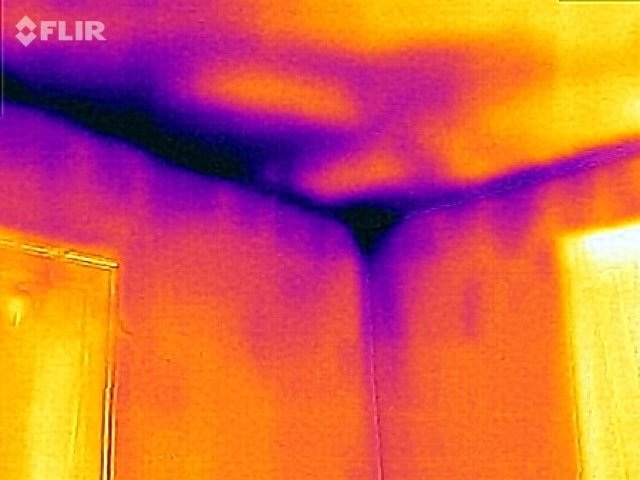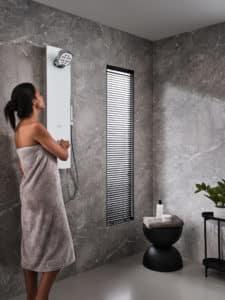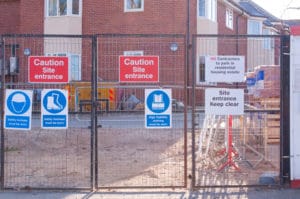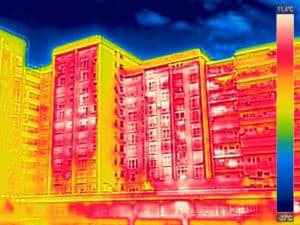Thermal Bridging can have a huge impact on your home’s energy efficiency. But, what is it exactly and how can we avoid its negative effects?
In the world of energy efficiency and sustainable construction, thermal bridging is a popular term that we need to discuss and understand. A thermal bridge, also known as a cold bridge, is an area within a building that has a significantly higher heat transfer than the surrounding materials. Problems like this can lead to a huge amount of issues such as making it more difficult to insulate your home meaning you are faced with higher energy bills, a lower energy rating and a property that isn’t sustainable or efficient. And… the problems go deeper. Interstitial condensation and mold growth is also a problem to look out for, proceeding major issues for those living in the property.
How can you avoid thermal bridging? From training developers to following building strategies involving insulation, making sure the structural composition and insulation will help to secure heat within the building will help to reduce threats of thermal bridging.
I know… it’s another thing to add to the already HUGE list! But, we are here to help you. We will go into more detail in this blog on what a thermal bridge is and how you can avoid the pest!
What is a thermal bridge?
A thermal bridge can be described as an area of a property or development where heat flow is different, resulting in a ‘path’ of least resistance when it comes to heat loss. It occurs when there’s a direct connection between the inside and outside of a building and can typically be seen in areas such as in the walls, floor and roof of a building.
And sadly, thermal brides can lead up to a heat loss of up to 30% within the home which can have a huge impact when it comes to our bills and energy rating. So, as a construction developer, it’s essential that thermal bridges are avoided whenever possible. With proper planning, design and construction, it will allow for construction workers to identify and remedy thermal bridges, but we will go into more detail about this later.
Why should you avoid thermal bridging?
Reduced Effectiveness of Insulation
Sadly, thermal bridges can have a more damaging effect on buildings that are airtight and have high levels of insulation. Insulation was designed to work all year round, so it’s not just heat loss during the winter that you have to worry about. In fact, thermal bridges can actually cause an increase in heat gain during the warmer months of the year, leading to overheating in the building.
Increased Energy Spend
Increased energy spend is another factor of thermal bridges. Depending on the severity and occurrence of the thermal bridge, it will mean occupants will spend more money keeping indoor temperatures at a consistent and comfortable level. So it’s essential that the design and construction of a building is created with a thermal bridge free design and keeps energy bills down.
Increased Risk of Condensation, Mold and Rot
Thermal bridges unfortunately can increase the risk of condensation on internal surfaces and even cause interstitial condensation within walls, which can be extremely dangerous as it cannot be seen. One of the effects of condensation is mold growth which can grow out of control and cause indoor air quality problems and negative impact for building occupants. Condensation can also be linked to rot and structural damage, so it’s best to avoid!
Pass SAP Test
Thermal bridging can also have a negative effect on scoring your SAP test. The Standard Assessment Procedure (SAP) assesses and compares the energy and environmental performance of dwellings and it is essential for anyone working on new residential developments. If the occupant wants to pass the SAP test the first time around, they have to make sure they avoid thermal bridging entirely.
How can you prevent thermal bridging?
Preventing thermal bridging will help to ensure a comfortable, healthy and high performing building. Depending on whether the building is a new build or retrofit, it’s essential that you pay attention to thermal bridging and consider these four areas when working to avoid thermal bridging.
Train developers to be fully trained in thermal bridge free construction
If a developer is working on the design and construction of a new build, it’s essential that everyone on the project is fully trained in thermal bridge-free construction. With proper training, potential thermal bridges can be identified well in advance and remedy them before they become an issue.
Increase the capacity for Insulation
This can be done in a variety of ways such as bringing thermal breaks into a design and selecting the right construction systems and elements that help to make your surface losses as minimal as possible. Options include covering external walls with a layer of thermal insulation to counteract the heat lost through the thermal bridges. Materials include polystyrene, mineral wool, concrete and brick masonry.
Follow building strategies for new builds
In new home construction, building strategies are essential in reducing thermal bridging. Looking into strategies such as continuous rigid insulation, structural insulation panels, advanced framing techniques and insulation on the exterior of walls.
Can Buildpass help me to avoid thermal bridging?
Yes! We are proud to say that we offer thermal bridging assessments here at BuildPass. In the assessments, we will carry out linear thermal bridge calculations, point thermal bridge calculations and a mold growth risk assessment to thoroughly check every avenue of the build. After the result has been determined, we will then advise you on the best next steps for you and your build, helping you to reduce heat loss and allow you to create the best energy efficient home possible.
When building or renovating your home, it can be confusing to know what to do next, but we are here to take some of that weight off of your shoulders and allow you to have fun in the process. Book in for a call with a member of our team to get started on your transformation.




















